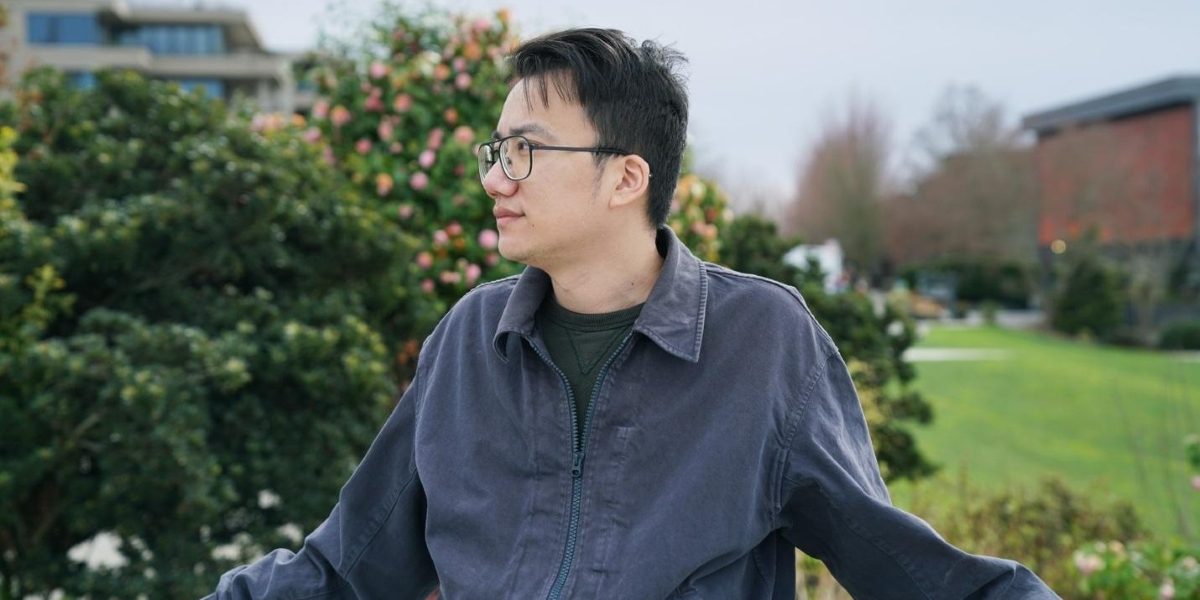By: Ran Kuang
An Interview with Siyuan Ma
Siyuan Ma is a Senior UX Designer at Amazon Alexa based in Seattle. Specializing in complex design challenges, he crafts intuitive experiences that leverage advanced technologies. Currently, he leads the development of AI-powered audio entertainment experiences used by millions of Alexa users worldwide. From industrial product design to digital user experience, his career reflects a deep commitment to advancing human-centered technology. Today, we speak with Siyuan about his journey, milestone achievements, and vision for design’s future in our rapidly evolving technological landscape.
Q1. Nice to meet you, Siyuan! Can you tell us about your background and current role in the design field?
It’s great to connect with you! I’m a Seattle-based UX designer with an interdisciplinary background spanning Human-Computer Interaction, industrial design, and product engineering. My career has taken me through the tech industry, automotive sector, and product manufacturing, where I’ve developed expertise in solving complex design challenges and creating compelling user experiences that harness advanced technologies.
Currently, I serve as a Senior UX Designer at Amazon Alexa, where I lead the creation of cutting-edge AI-powered audio entertainment experiences for hundreds of millions of users globally. As AI technologies advance rapidly, customer expectations evolve—demanding more intelligent, personalized interactions with AI assistants. My responsibility is to leverage AI capabilities to deliver exceptional audio experiences that delight users while driving Alexa’s business growth.
Beyond my work at Amazon, I pursue creative design projects, several of which have received international recognition, including the prestigious iF Design Award and Muse Design Awards. These acknowledgments have been truly gratifying.
Q2. You recently won an iF Design Award with the MIKO Industrial Design team! What does this recognition mean to you?
Thank you! Receiving an iF Design Award alongside the MIKO Industrial Design team is genuinely humbling. The iF Design Award stands as one of the most respected global design distinctions, celebrating innovation, aesthetics, and user-centered design principles. I’m incredibly grateful for the opportunity to collaborate with MIKO and receive such distinguished recognition.
Working with this leading Chinese product design and brand consulting firm was truly inspiring. The team brought together diverse expertise, enabling us to integrate rigorous research with forward-thinking design approaches. The project reconnected me with my product engineering roots, which now complement my digital UX expertise in valuable ways. While confidentiality agreements prevent me from sharing specific details, I can say that this achievement highlights the power of cross-disciplinary collaboration in creating innovative products. I’m thankful to have contributed to work that pushes the boundaries of design excellence.
Q3. What initially drew you to pursue a career in design?
What I love about design is that it’s a form of craftsmanship that seamlessly integrates aesthetics with functionality. At its essence, design involves deeply understanding human needs, emotions, behaviors, and values, then engaging in an experimental, iterative, and creative process to develop solutions that positively influence people’s lives.
Throughout my career, I’ve been fascinated by technology’s profound impact on society. Products powered by cutting-edge innovations shape our daily lives in ways previously unimaginable. Working as a designer at the forefront of the tech industry has given me opportunities to shape emerging technologies while advocating for human-centered values—building a future that inspires hope rather than anxiety. I see fundamental similarities across different design disciplines. My core belief is that exceptional products should embody human values that contribute to a better future.
Q4. Your independent projects have also received international design recognition. Could you share what inspires these projects and your key design considerations?
Collaborating with teammates on independent projects has been rewarding—drawing on our collective design expertise while reflecting our shared commitment to human-centered technology.
Our award-winning project “Axel” illustrates this approach perfectly. Axel is an exploratory concept designed to empower passengers in privately owned Level 3 and Level 4 autonomous vehicles. Our extensive research revealed widespread distrust and misconceptions about autonomous driving technology, primarily stemming from lack of transparency and concerns about surrendering control to machines.
Axel addresses these issues using image recognition AI to gather and communicate real-time traffic information. Additionally, it provides interactive touchpoints tailored to various driving scenarios, allowing passengers to influence the vehicle’s behavior and maintain a sense of control throughout their journey. Deep empathy with potential users guided our entire design process. While my expertise in empathetic design contributed significantly, our collaborative teamwork throughout the process amplified our human-centered approach.
Q5. What has been the biggest challenge in your design process?
In any design process, we inevitably encounter constraints—whether related to time, budget, or technical limitations. Managing these constraints effectively is rarely taught in academic settings but develops through professional experience.
With the Axel project specifically, one of our greatest challenges was conducting meaningful research and accurately predicting behaviors for users who don’t yet exist—private autonomous vehicle owners. This challenge appears frequently when designing for emerging technologies that introduce entirely new mental models. To address this, we studied current vehicle owners as analogous research participants, investigating situations where they ride as passengers in their own vehicles driven by someone else. This helped us bridge the gap between experiences with human drivers and potential autonomous driving scenarios.
Q6. How do you see design evolving, and which emerging trends most excites you?
Design, particularly UX design, is transforming rapidly with the integration of AI, voice technology, and multimodal interactions. As AI becomes more embedded in our daily experiences, designers must ensure these technologies remain ethical, inclusive, and transparent.
One of the most promising trends I’m observing is context-aware AI, where systems adapt to users’ needs in real-time, making interactions more seamless and intuitive. However, with this remarkable potential comes significant responsibility—designers must address algorithmic biases and ensure fairness in AI-driven decision-making.
The convergence of physical and digital experiences also presents fascinating opportunities, blurring traditional boundaries between product design and user experience. This intersection is where some of the most innovative solutions will emerge.
Q7. What advice would you give to aspiring designers?
Cultivate curiosity and embrace challenges. The design field constantly evolves, and the most effective way to grow is by exploring unfamiliar territory and taking on projects outside your comfort zone.
As designers, we regularly collaborate with cross-functional teams, and I believe building strong relationships with stakeholders while earning their trust is crucial for project success. This process often requires examining problems from multiple perspectives and developing robust communication skills—both visual and verbal.
Finally, remember that design isn’t just about aesthetics or functionality—it’s about impact. Measure your success by how meaningfully your work improves people’s lives, not just by how it looks in your portfolio.
Final Words
Through our conversation with Siyuan Ma, we’ve gained insight into how design extends far beyond interfaces or form factors—it’s a discipline that shapes human experiences, promotes inclusivity, and drives innovation. Whether creating AI-powered interactions digitally or reimagining how people engage with physical products, his work demonstrates the power of thoughtful, research-driven design.
As technology continues to evolve at an unprecedented pace, Siyuan envisions a future where UX design serves as the crucial bridge between human needs and emerging innovations. His journey exemplifies design’s transformative potential, showing that exceptional design doesn’t simply solve problems—it fundamentally reimagines possibilities and shapes a more human-centered technological future.
Published by Tom W.

















